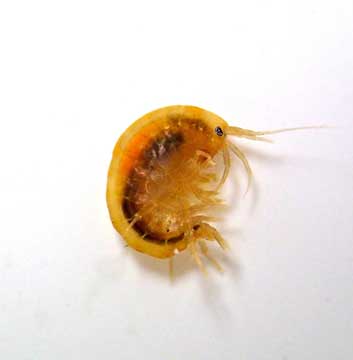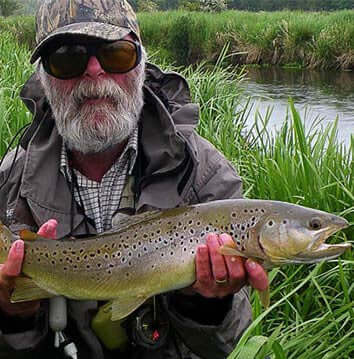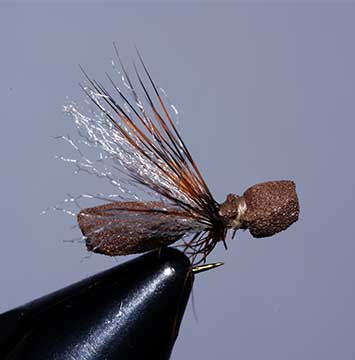Gammarus, Fresh Water Shrimps are strictly speaking not flies but Crustaceans, close relatives of crabs & lobsters. However, we fly fishers generally consider any concoction that vaguely represents food for trout & grayling (plus other species) that is cast with a fly rod to be a fly. There are a number of species in the UK of which our native Gammarus pulex is the most common in fresh water habitats. Other significant species include:
This species has spread widely via the Midlands canal system into some Derbyshire streams & has now reached the Yorkshire Aire. Great care is needed to limit the spread of these potentially harmful aliens, by adhering to the following standard biosecurity proceedures:
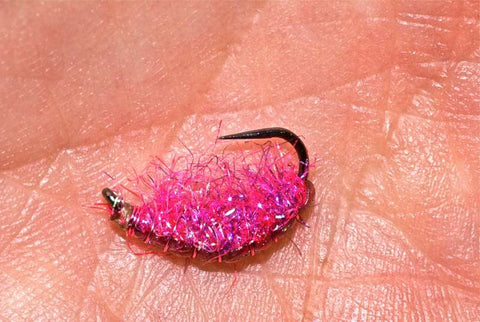
Lavender Pink Shrimp
Gammarus are more abundant in waters with a relatively high pH, particularly chalk streams & limestone spring creeks. On the Driffield Beck chalk stream I capture up to 5000 plus in a 3 minutes kick sample. They are very sensitive to pollution & are one of the indicator groups used in the Riverfly Partnership’s Invertebrate Monitoring Scheme carried out by many anglers to check the health of our rivers. On Oxfolds Beck near Pickering, North Yorkshire Gammarus were abundant above the two local trout farms but virtually absent in sites immediately below their outfalls, then abundant again a mile below them, a clear sign of problems.

Gammarus pulex infected with Pomphorhynchus laevis parasite
I am pleased to say that after extensive work from the EA & Fish Legal water quality seems to be improving & Gammarus are reappearing in the vicinity of the trout farm outfalls. Both trout & grayling will feed avidly on these small crustaceans (up to 25mm long, but generally about 15mm & smaller) so it’s well worth having some fly patterns that represent them. Having been greatly influenced by the late Richard Walker I am a believer in exaggerating those features of a fly that I feel are the key identifiers/trigger points that make it attractive to the fish. Furthermore there is a scientifically proven phenomenon, called Oddity Selection, whereby a fish finds a potential food item that looks or behaves slightly different from the norm more attractive.

Grayling & UVSP Shrimp
This is why the Acanthocephalan (spiny-headed worm) parasite, Pomphorhynchus laevis, accumulates the carotenoid pigments that naturally occur in Gammarus, forming the highly visible orange spot, whilst also disrupting the shrimp’s hormone balance making it more active in daylight, thus helping to ensure that it enters its secondary host, a fish. As a result I like to exaggerate the orange colour or tie the very popular pink & purple shrimp patterns. I have had great success with both orange & pink since the late 1960s when I first tied these rather garish colours in response to an article by Dick Walker who suggested pink since trout that ate shrimps had pink flesh.

UVSP Shrimp
I see pink trout flesh as orange so I tied orange as well as pink. One of my favourite variants combines both these colours: I call it the UVSP Shrimp since the dubbed body is Ultra Violet Shrimp Pink Ice Dub, which as you’ll see from the photo glistens orange & pink. Several years ago I gave some UVSP Shrimps to Stuart Crofts who used them whilst guiding on the R. Test. On his return he told me that I’d been banned from all Southern chalk streams despite my having never fished a Southern chalk stream at that time. The reason? He & his client had absolutely ‘bagged up’ on big grayling. It has also accounted for a couple of 3lb plus grayling for me on my local East Yorkshire chalk stream, Driffield Beck.
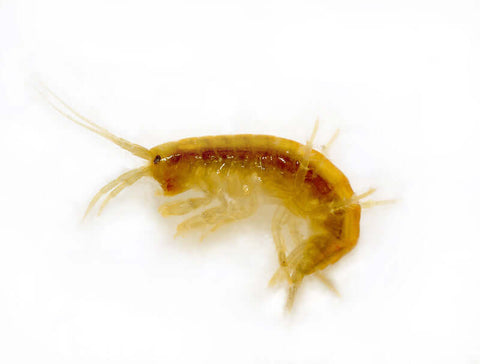
Gammarus pulex
Gammarus imitations will catch fish throughout the year. However, I much prefer to fish the dry fly, but particularly when winter grayling fishing a shrimp pattern is often on my cast. My usual set-up for fishing with Gammarus patterns is a 10’ 2 weight or 11’ 3 weight rod teamed up with a 0.55mm diameter micro-nymph line to which I attach a 7’ tapered section from a tapered leader (tapering from about 0.5mm to 0.2mm diameter) to which I attach about 1’ of semi curly-whirly indicator (the white core from 20lb Airflo Miracle Shooting Braid run between thumb nail & forefinger to make it spiral) & then 4 to 6’ of tippet depending on the water depth. I generally prefer to fish a single fly & when possible sight fish.
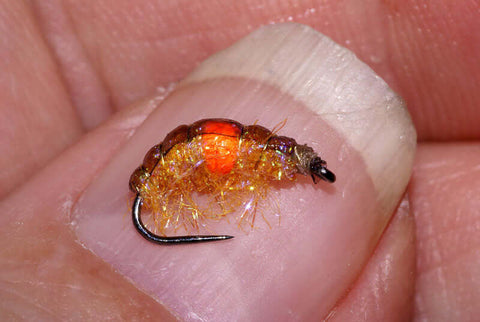
Orange Spot UVSP Shrimp
When ‘search fishing’ I Euronymph/Czech nymph & only resort to multiple flies when I need to get my flies deep down. My reasons for preferring a single fly are twofold; firstly several of the waters that I fish insist on a single fly only & secondly it eliminates the risk of the second fly snagging whilst playing a good fish or hooking a second big fish & loosing both (I’ve experienced both of these problems).
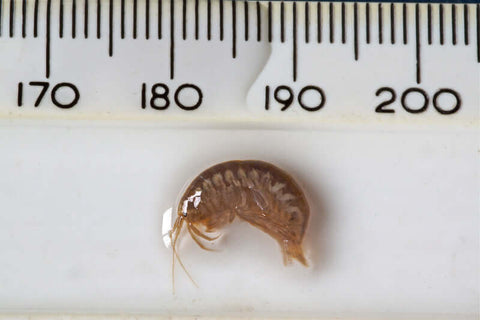
Gammarus tigrinus
Useful Websites: www.nonnativespecies.org/alerts/index.cfm?id=3






























